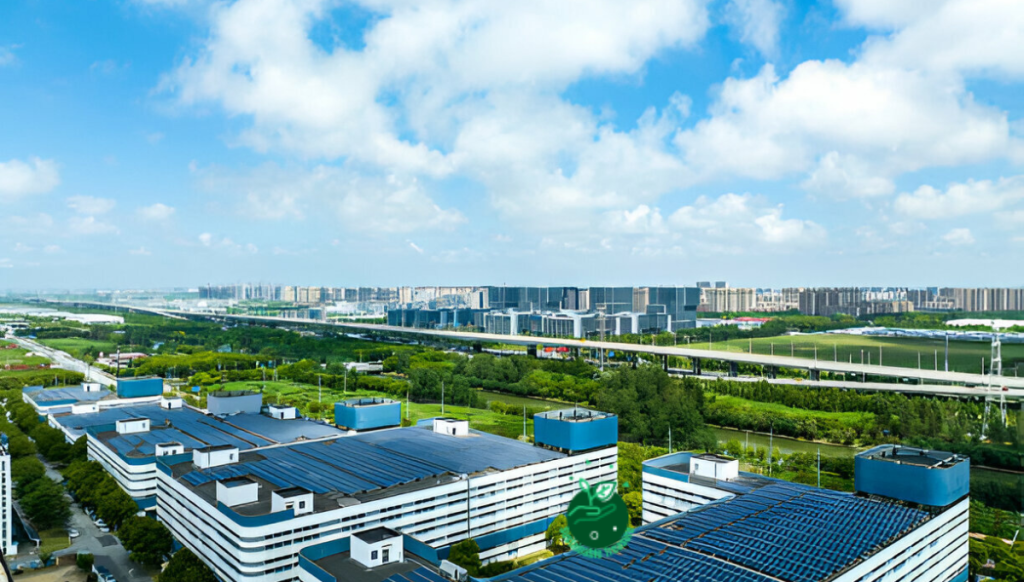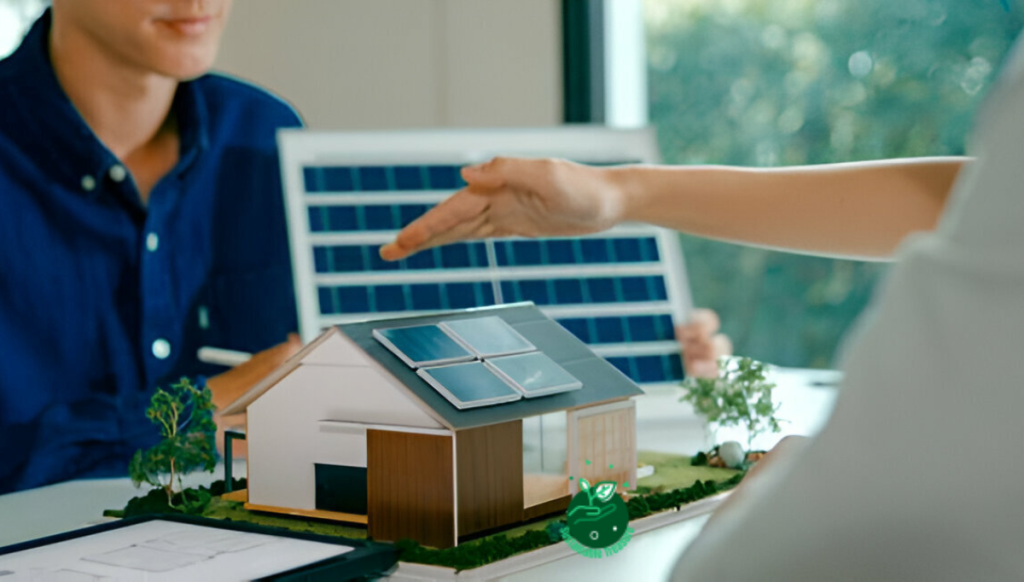Table of Contents
As the world grapples with the pressing challenges of climate change and environmental degradation, a paradigm shift towards a sustainable future has become an economic and existential imperative.
At the forefront of this transition lies the burgeoning clean technology sector, which holds immense potential for driving economic development while simultaneously mitigating the adverse impacts of traditional energy sources.
Investing in clean technology is not merely a moral obligation but a strategic economic imperative. By embracing renewable energy, energy efficiency, and green manufacturing, nations can unlock a myriad of opportunities for job creation, innovation, and sustainable economic growth.
This blog post delves into the pivotal role of clean technology investment in propelling economic development while safeguarding our planet’s finite resources.
The Clean Tech Landscape: An Overview

Renewable Energy: Harnessing Nature’s Bounty
Renewable energy sources, such as solar photovoltaics (PV), wind energy, and hydroelectric power, have emerged as game-changers in the battle against climate change.
These technologies harness the inexhaustible power of the sun, wind, and water, offering a sustainable and environmentally friendly alternative to fossil fuels.
The growth of the renewable energy sector has been nothing short of remarkable, with global investments in renewable power and fuel production reaching a staggering $365 billion in 2022, according to the Renewable Energy Policy Network for the 21st Century (REN21).
This surge in investment has been driven by declining costs, technological advancements, and a growing understanding of the urgency to mitigate climate change.
| Renewable Energy Source | Global Capacity (GW) |
|---|---|
| Solar PV | 942 |
| Wind Energy | 844 |
| Hydropower | 1,260 |
| Bioenergy | 142 |
| Geothermal Energy | 15 |
Source: REN21 Renewables 2023 Global Status Report
Energy Efficiency: Doing More with Less
Energy efficiency has emerged as a critical component of the clean technology revolution, offering a cost-effective and immediate solution to reduce greenhouse gas emissions while simultaneously driving economic growth.
By optimizing energy use in buildings, transportation, and industrial processes, energy efficiency measures can significantly reduce energy consumption and associated costs, freeing up resources for investment in other sectors of the economy.
According to the International Energy Agency (IEA), energy efficiency improvements enabled by clean technology have the potential to contribute over 40% of the emissions reductions needed to achieve the Paris Agreement’s goal of limiting global temperature rise to 1.5°C above pre-industrial levels.
Green Manufacturing: Reshaping Industrial Processes
The manufacturing sector, a vital component of any thriving economy, has traditionally been a significant contributor to greenhouse gas emissions and environmental degradation.
However, the advent of clean technology has ushered in a new era of green manufacturing, where innovative processes, materials, and technologies are being employed to reduce the environmental impact of industrial activities.
Clean manufacturing practices encompass a wide range of initiatives, including the adoption of renewable energy sources, the implementation of energy-efficient processes, the development of sustainable materials, and the optimization of supply chain operations to minimize waste and emissions.
Economic Benefits of Clean Tech Investment

Job Creation and Economic Growth
Investing in clean technology not only supports environmental sustainability but also drives economic growth and job creation.
The transition to a green economy has the potential to generate millions of new jobs across various sectors, including renewable energy generation, energy efficiency services, green construction, and sustainable transportation.
According to a report by the International Renewable Energy Agency (IRENA), the global renewable energy sector employed approximately 12.7 million people in 2021, with solar photovoltaics and bioenergy leading the way in job creation.
Moreover, the economic benefits of clean technology investment extend beyond direct employment. The development and deployment of clean technologies stimulate innovation, foster technological advancements, and create new markets and business opportunities, contributing to overall economic growth and competitiveness.
Reduced Energy Costs and Improved Energy Security
By leveraging clean technologies such as renewable energy and energy efficiency, nations can reduce their dependence on imported fossil fuels, enhancing energy security and insulating their economies from price volatility in global energy markets.
Additionally, the declining costs of renewable energy technologies have made them increasingly cost-competitive with traditional energy sources, offering long-term savings for businesses and households.
According to a report by the International Energy Agency (IEA), the global weighted-average levelized cost of electricity (LCOE) from utility-scale solar PV projects fell by 88% between 2010 and 2021, making it one of the most cost-effective sources of electricity generation in many regions.
Environmental and Social Benefits
While the economic benefits of clean technology investment are undeniable, it is essential to recognize the broader environmental and social implications.
By transitioning to a low-carbon economy, nations can mitigate the adverse impacts of climate change, such as rising sea levels, extreme weather events, and biodiversity loss, safeguarding the well-being of current and future generations.
Moreover, clean technology investment can contribute to improved air quality, reduced water pollution, and the preservation of natural resources, enhancing public health and quality of life.
Additionally, the development of sustainable communities and the promotion of responsible consumption and production patterns align with the United Nations’ Sustainable Development Goals, fostering a more equitable and prosperous society.
Challenges and Opportunities in Clean Tech Investment
Despite the compelling benefits of investing in clean technology, several challenges must be addressed to accelerate the transition to a sustainable future.
Policy and Regulatory Frameworks
Robust and consistent policy and regulatory frameworks are crucial for creating a conducive environment for clean technology investment.
Governments play a pivotal role in providing financial incentives, setting ambitious emissions reduction targets, and establishing clear guidelines for the deployment and integration of clean technologies.
Furthermore, international cooperation and harmonization of policies and standards can facilitate cross-border investments, foster technological transfer, and promote global collaboration in addressing climate change.
Financing and Investment Strategies
Scaling up clean technology deployment requires substantial capital investment. While the cost of renewable energy and energy efficiency technologies has declined significantly, mobilizing the necessary financing remains a challenge, particularly in emerging economies.
Innovative financing mechanisms, such as green bonds, public-private partnerships, and blended finance solutions, can help attract private capital and mitigate investment risks.
Additionally, impact investing and environmental, social, and governance (ESG) considerations are gaining traction, encouraging investors to align their portfolios with sustainable development goals.
Technological Innovation and Research & Development
Continuous technological innovation and research & development are essential for driving the clean technology revolution. Advancements in areas such as energy storage, smart grid technologies, hydrogen fuel cells, and carbon capture and storage can unlock new possibilities and accelerate the transition to a low-carbon economy.
Public and private sector collaboration, along with strategic investments in research and development, can foster breakthrough innovations and bring promising clean technologies to market faster.
Workforce Development and Skills Training
The transition to a green economy will inevitably reshape the labor market, creating new job opportunities while potentially displacing workers in traditional industries. Proactive workforce development strategies and skills training programs are crucial to ensure a just transition and equip workers with the necessary competencies to thrive in the clean technology sector.
Collaboration between educational institutions, industry partners, and government agencies can facilitate the development of tailored curricula, upskilling programs, and apprenticeship opportunities to cultivate a skilled and adaptable workforce.
FAQs

What are the economic benefits of investing in clean technology?
The economic advantages of investing in clean technology are multifaceted and far-reaching. Firstly, the development and deployment of clean technologies stimulate innovation, foster technological advancements, and create new markets and business opportunities, contributing to overall economic growth and competitiveness.
Additionally, the transition to renewable energy sources and energy-efficient practices reduces dependence on imported fossil fuels, enhancing energy security and insulating economies from price volatility in global energy markets.
Moreover, the clean technology sector is a significant job creator, with the potential to generate millions of new employment opportunities across various industries, including renewable energy generation, energy efficiency services, green construction, and sustainable transportation.
These green jobs not only contribute to economic development but also support the transition towards a more sustainable and environmentally conscious society.
How can governments support clean technology investment?
Governments play a crucial role in promoting and supporting clean technology investment through robust policy and regulatory frameworks.
This includes providing financial incentives, such as tax credits, grants, and subsidies, to encourage private sector investment in clean technologies.
Setting ambitious emissions reduction targets and establishing clear guidelines for the deployment and integration of clean technologies can also create a conducive environment for investment.
Furthermore, governments can foster public-private partnerships, facilitate access to financing mechanisms like green bonds, and invest in research and development to drive technological innovation.
Additionally, international cooperation and harmonization of policies and standards can facilitate cross-border investments and promote global collaboration in addressing climate change.
What are the challenges faced in scaling up clean technology deployment?
While the benefits of clean technology investment are evident, several challenges must be addressed to accelerate the transition to a sustainable future.
Financing and mobilizing the necessary capital investment remains a significant hurdle, particularly in emerging economies. Innovative financing mechanisms, such as green bonds, public-private partnerships, and blended finance solutions, can help attract private capital and mitigate investment risks.
Continuous technological innovation and research & development are also essential for driving the clean technology revolution.
Advancements in areas such as energy storage, smart grid technologies, hydrogen fuel cells, and carbon capture and storage can unlock new possibilities and accelerate the transition to a low-carbon economy.
Additionally, the transition to a green economy will reshape the labor market, necessitating proactive workforce development strategies and skills training programs to ensure a just transition and equip workers with the necessary competencies to thrive in the clean technology sector.
How can clean technology investment contribute to environmental sustainability?
Investing in clean technology plays a pivotal role in mitigating the adverse impacts of climate change and promoting environmental sustainability.
By transitioning to renewable energy sources and energy-efficient practices, nations can significantly reduce greenhouse gas emissions and their carbon footprint, contributing to the global effort to combat climate change.
Moreover, clean technologies offer solutions for reducing water pollution, preserving natural resources, and promoting responsible consumption and production patterns.
The development of sustainable communities and the adoption of circular economy principles align with the United Nations’ Sustainable Development Goals, fostering a more equitable and prosperous society while protecting the planet’s finite resources for future generations.
What are the opportunities for investors in the clean technology sector?
The clean technology sector presents numerous investment opportunities across various industries and technologies. Renewable energy sources, such as solar photovoltaics, wind energy, and hydroelectric power, offer promising prospects for investors seeking to capitalize on the growing demand for sustainable energy solutions.
Energy efficiency technologies, including building automation systems, energy-efficient appliances, and industrial process optimization, offer attractive investment opportunities as businesses and households seek to reduce their energy consumption and associated costs.
Additionally, the development of sustainable materials, green manufacturing processes, and clean transportation solutions, such as electric vehicles and hydrogen fuel cells, present exciting investment prospects for forward-thinking investors.
As the global shift towards a low-carbon economy accelerates, the clean technology sector is poised to offer significant growth potential and attractive returns for those willing to invest in a sustainable future.
Conclusion
Investing in clean technology is not merely an environmental imperative but a strategic economic opportunity that holds the key to a sustainable and prosperous future.
By embracing renewable energy, energy efficiency, and green manufacturing, nations can unlock a myriad of benefits, including job creation, economic growth, reduced energy costs, and improved energy security.
However, realizing the full potential of clean technology investment requires a concerted effort from governments, businesses, and civil society.
Robust policy frameworks, innovative financing mechanisms, technological innovation, and workforce development strategies are essential components of a comprehensive approach to accelerating the transition to a low-carbon economy.
As we navigate the challenges of climate change and environmental degradation, investing in clean technology emerges as a powerful catalyst for driving economic development while safeguarding our planet’s finite resources.
By seizing the opportunities presented by clean technology, we can pave the way for a sustainable future, where economic prosperity and environmental stewardship go hand in hand.



